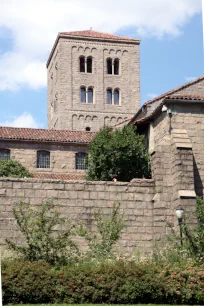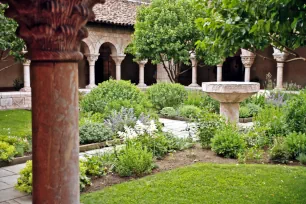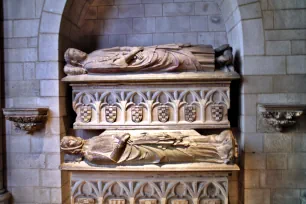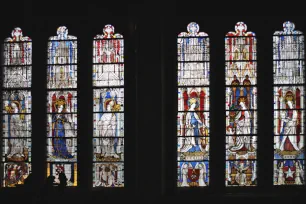A unique branch of the Metropolitan Museum of Art, The Cloisters is dedicated to the art and architecture of Middle Ages Europe.

A Different Kind of Museum
The Cloisters Museum sits in Upper Manhattan’s Fort Tryon Park on a hill overlooking the Hudson River. The museum building and the surrounding gardens cover approximately four acres (1.6 ha).
The museum was designed by Charles Collens (1873-1956), the same architect who created New York City’s Riverside Church. Joseph Breck worked on the interior, with assistance from James J. Rorimer, who created the galleries so that they flowed logically from the Romanesque to the Gothic period.




The museum houses approximately five thousand works of art from Medieval Europe, particularly the twelfth through the fifteenth century.
A portion of the collection belonged to John D. Rockefeller Jr., who gave a grant to the Metropolitan Museum of Art in order to establish this new museum, which was completed in 1938. Much of the collection, however, belonged to American sculptor George Grey Barnard, who was a prolific collector of European medieval art. Barnard had already created a small museum in the Fort Washington section of the city, near the museum’s current location. Rockefeller purchased Barnard’s collection and gave it to the Met along with his pieces. He also purchased land for the museum (now Fort Tryon Park) as well as land across the river in order to preserve the view for museum-goers.
Museum sights
The unique aspect of The Cloisters is the fact that the very museum is part of the collection. The building incorporates pieces from five medieval French cloisters (quadrangles enclosed by a roofed or vaulted passageway which provided sheltered access from one building to another) and from other monastic sites located throughout southern France. Three of these reconstructed cloisters also feature gardens that were planted according to horticultural information found in various journals or books from The Middle Ages.
Aside from admiring the historic buildings, visitors to The Cloisters will enjoy a number of other not-often-seen works of art from that time period, including the stars of the museum – seven Flemish tapestries that depict “The Hunt of the Unicorn”. These were part of Rockefeller’s collection. Other pieces of art include ornate illuminated manuscripts, stained-glass, metalwork, enamels, and ivories.
The Cloisters presents a variety of special events for the public during the course of the year, including medieval festivals, family workshops, garden tours, gallery talks, and concerts.
- Next: Tudor City
- More Sights & Attractions in New York

